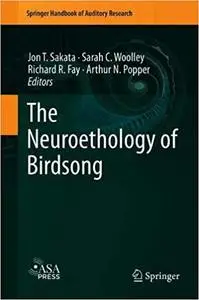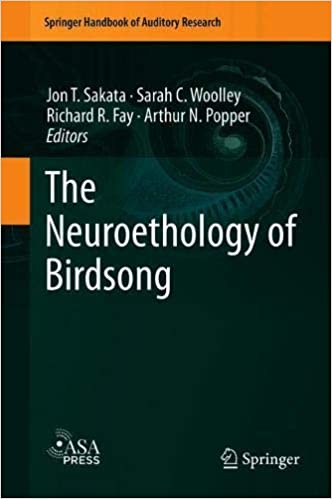Jon T. Sakata, "The Neuroethology of Birdsong (Springer Handbook of Auditory Research) "
English | ISBN: 303034682X | 2020 | 286 pages | EPUB, PDF | 16 MB + 7 MB
English | ISBN: 303034682X | 2020 | 286 pages | EPUB, PDF | 16 MB + 7 MB
Vocal signals are central for social communication across a wide range of vertebrate species; consequently, it is critical to understand the mechanisms underlying the learning, control, and evolution of vocal communication. Songbirds are at the forefront of research into such neural mechanisms. Indeed, songbirds provide a particularly important model system for this endeavor because of the many parallels between birdsong and human speech. Specifically, (1) songbirds are one of the few vertebrate species that, like humans, learn their vocal signals during development, (2) the processes of song learning and control in songbirds shares many parallels with the process of speech acquisition in humans, and (3) there exist deep homologies between the circuits for the learning, control, and processing of vocal signals across songbirds and humans. In addition, because of the diversity of songbirds and song learning strategies, songbirds offer a powerful model system to use the comparative method to reveal mechanisms underlying the evolution of song learning and production. Taken together, research on songbirds can not only reveal general principles underlying vertebrate vocal communication but can also provide insight into potential mechanisms underlying the learning, control, and processing of speech.
This volume will cover a range of topics in birdsong spanning multiple level of analysis. Chapters will be authored by the world’s leading experts on birdsong and will provide comprehensive reviews of the processes underlying song learning, of the neural circuits for song learning and control as well as for the extraction and processing of song information, of the selection pressures underlying song evolution, and of genetic and molecular mechanisms underlying the learning and evolution of song. The primary goals of this volume are to provide comprehensive, integrative, and comparative perspectives on birdsong and to underscore the importance of birdsong to biomedical research, evolutionary biology, and behavioral, systems, and computational neuroscience.
The target audience of this volume will be graduate students, postdoctoral fellows, and established academics and neuroscientists who are interested in mechanisms of communication from an integrative and comparative perspective. The volume is intended to function as a high-profile and contemporary reference on current work related to the learning, control, processing, and evolution of birdsong. This volume will have broad appeal to comparative and sensory biologists, neurophysiologists, and behavioral, systems, and cognitive neuroscientists who attend meetings such as the Society for Neuroscience, the International Society for Neuroethology, and the Society for Integrative and Comparative Biology. Because of the relevance of birdsong research to understanding human speech, it is likely that the volume will also be of interest to speech researchers and clinicians researching communication, motor, and sensory processing disorders.



